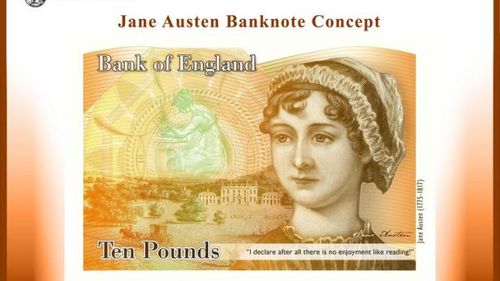
As mentioned, I’m now becoming a collector of weird and
wacky bank notes, as well as those that are hugely historical or politically
interesting.
This is particularly worthwhile as cash is disappearing fast so these notes won't be around for long (I jest, of course).
Actually, bank notes are interesting, as blogged about yesterday with regard to Zimbabwe's notes.
An illustration of how emotive currency is was shown just this week.
On returning to the UK, our bank notes have been under a hote debate as the Bank of England decided to replace the only female figure other than the Queen on our bank notes. From 2016, the historical social reform champion Elizabeth Fry is being taken off our £5 note and replaced by Winston Churchill.
This would mean that no female figure of history would appear on British notes, and resulted in a change.org campaign to change the Bank of England's view and keep at least one woman on a banknote.
Garnering over 35,000 signatures the petition achieved success this week with the new Bank of England Governor Mark Carney, announcing that Jane Austen will appear on our £10 banknotes from 2017.

A great social media story, and one for the new Governor to gain even more adoring female fans (they have nicknamed him the George Clooney of banking!).
Anyways, back to the wacky notes and these are now very collectable.
Zimbabwe bank notes command around $125 for the full collection if you want to buy them online.
Looking further afield, you can then find that there’s actually a big trade in these things worldwide,
with notes like this one from the Saddam Hussein Iraq era ...
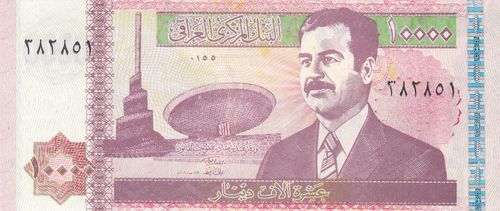
... drawing prices of around $12 each.
That may seem cheap, but then there were quite a few of
these notes issued in 2002.
Much rarer is the Muammar Gaddafi 50 dinar banknote.
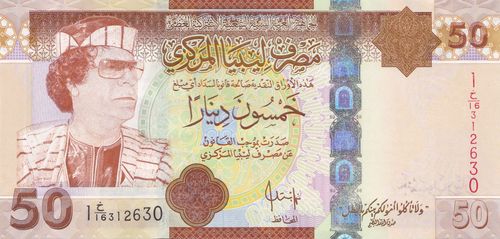
Issued in 2008, it was withdrawn in 2011 and is now being
destroyed, so this note will become much rarer in the future.
What both of these notes show is that the leader of the
nation is the person who is viewed as most important to be seen on the currency
of their nation.
This is not always true of course – American notes show
historical leaders whilst some currencies, such as Zimbabwe’s, show notable
landmarks.
These rocks for example, are a specific rock formation found
in the Matopos National Park in Zimbabwe and have been found on the Zimbabwe bank
notes since they were first issued in 1980 …
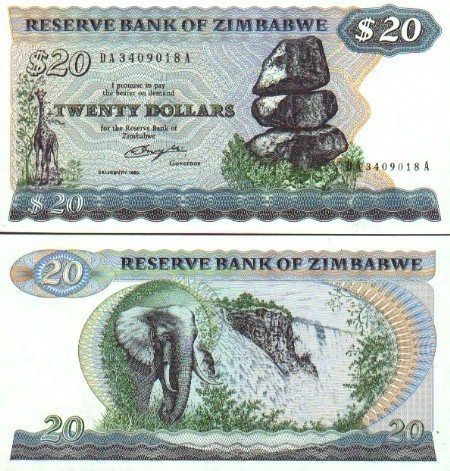
… right through to the final issuing of 100 trillion dollar
notes in 2009.
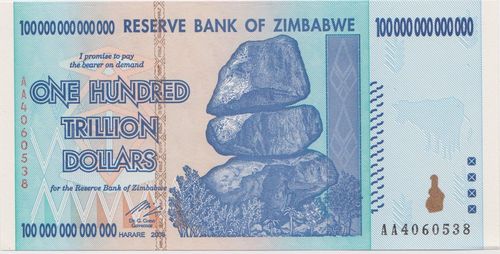
Surprising there's no Robert Mugabe appearance on the notes.
But then what is really notable on African banknotes is the
importance of the Big Five.
The Big Five are the five animals that used to be hunted on
the basis of their being the greatest threat to the hunter. These five animals are elephants, buffalo,
lions, leopards and the black rhinoceros.
The Big Five are integral to Africa today, as these are the
animals tourists most want to shoot in the wildlife parks, although luckily the
tourists want to shoot them with cameras rather than guns.
I was lucky enough to see all of the Big Five up close and
personal in Kruger Park Reserve during our trip, but won’t bore you with my
holiday stories (although the dancing elephant, lion kill and hippo crocodile
fight are all particularly memorable and interesting).
Instead, I’ll bore you with African banknotes and, as you can see above, the Big Five have appeared regularly on Zimbabwe's notes and also on many others, such as the South African banknotes.
South African bank notes feature the Big Five in 10, 20, 50, 100 and 200 rand denominations.
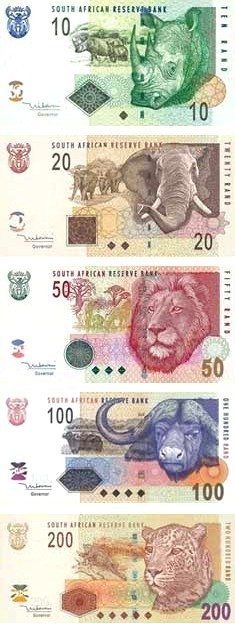
By way of an aside, rand is the currency in South Africa and the term stems from the word Witwatersrand, an Afrikaans word that means White Waters Ridge in English.
This is the ridge which Johannesburg is built upon, and also represents
the area where most of South Africa's gold deposits were found.
Of a final particular note, you may find Hussein and Gaddafi
on the Iraqi and Libyan notes of old, but who do you find on South African
notes?
Nelson Mandela of course.

These notes have been issued with the image of the new
father of South Africa since 2012, using an image of Mandela from 1990.
A huge influence on Africa today, it is amazing that his presence
can be felt everywhere throughout the country, with statues and squares named
after Mandela throughout the country.
An inspiration to all, and not surprising why.
“No one is born hating another person because of the colour
of his skin, or his background, or his religion. People must learn to hate, and if they can
learn to hate, they can be taught to love, for love comes more naturally to the
human heart than the opposite.”
Nelson Mandela
Chris M Skinner
Chris Skinner is best known as an independent commentator on the financial markets through his blog, TheFinanser.com, as author of the bestselling book Digital Bank, and Chair of the European networking forum the Financial Services Club. He has been voted one of the most influential people in banking by The Financial Brand (as well as one of the best blogs), a FinTech Titan (Next Bank), one of the Fintech Leaders you need to follow (City AM, Deluxe and Jax Finance), as well as one of the Top 40 most influential people in financial technology by the Wall Street Journal's Financial News. To learn more click here...

